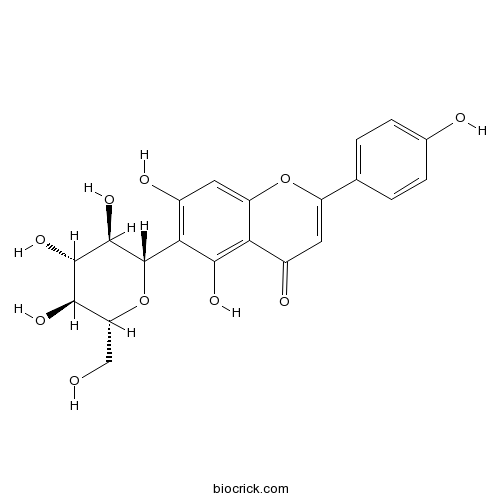Santalum album
Santalum album
1. The products in our compound library are selected from thousands of unique natural products; 2. It has the characteristics of diverse structure, diverse sources and wide coverage of activities; 3. Provide information on the activity of products from major journals, patents and research reports around the world, providing theoretical direction and research basis for further research and screening; 4. Free combination according to the type, source, target and disease of natural product; 5. The compound powder is placed in a covered tube and then discharged into a 10 x 10 cryostat; 6. Transport in ice pack or dry ice pack. Please store it at -20 °C as soon as possible after receiving the product, and use it as soon as possible after opening.
Natural products/compounds from Santalum album
- Cat.No. Product Name CAS Number COA
-
BCN4984
Orientin28608-75-5
Instructions

-
BCN5441
Isovitexin38953-85-4
Instructions

-
BCN4985
Luteolin-6-C-glucoside4261-42-1
Instructions

[Nondestructive detection of total nitrogen content in leaves of Santalum album based on ST-PCA-BP neural network.][Pubmed: 29797888]
None
A new β-tetralonyl glucoside from the Santalum album derived endophytic fungus Colletotrichum sp. GDMU-1.[Pubmed: 29553810]
None
Efficacy of Tamarindus indicus, Melia azadirach and Santalum album in syndromic management of abnormal vaginal discharge: A single-blind randomised controlled trial.[Pubmed: 29257757]
Background At least 25 % of women attending genitourinary medicine (GUM) clinics receive treatment for one of the three common causes of abnormal vaginal discharge: bacterial vaginosis, candidiasis and trichomoniasis. Syndromic diagnostic approach was adopted by National AIDS Control Organisation (NACO) India, at the primary health centre level. Syndromic management implies the simultaneous treatment of two or more infections. The aim of this study was to assess efficacy of sandal sufaid, maghze tukhme bakayin and khaste tamar hindi in syndromic management of Sailanur rehm. Methods This study was a randomized, single blind, standard controlled trial. It was conducted to compare efficacy of formulation which contains buradae sandal safaid, safoofe maghze tukhme bakayin, safoofe khaste tamar hindi and safoofe shakkar safaid against combination of azithromycin, fluconazole and secnidazole on diagnosed subjects of Sailanur rehm. Test group received 10 g of test drug B.D for 21 days while control group received single dose of standard drug to both the partners. Vaginal symptom score (VSS) was used for assessing discharge and associated complaints. Visual analogous scale (VAS) was used for assessing low backache and lower abdominal pain. Results There were no significant differences between the two groups concerning baseline characteristics (p>0.05). VSS was significantly decreased with p<0.001 for both control and test group. VAS was significantly decreased with p<0.001 and p=0.07 in test and control group respectively for low backache. For lower abdominal pain p=0.006 for both groups after the completion of treatment. Conclusions The formulation can effectively alleviate the disease with associated symptoms without any side effects. It can be used in syndromic management of vaginal discharge. Future research is on large sample size.
Antifungal and Ichthyotoxic Sesquiterpenoids from Santalum album Heartwood.[Pubmed: 28698478]
None
An extended model of heartwood secondary metabolism informed by functional genomics.[Pubmed: 28633414]
The development of heartwood (HW) and the associated accumulation of secondary metabolites, which are also known as 'specialized metabolites' or 'extractives', is an important feature of tree biology. Heartwood development can affect tree health with broader implications for forest health. Heartwood development also defines a variety of wood quality traits that are important in the forest industry such as durability and colour of wood products. In the bioproducts industry, HW provides a source of high-value small molecules such as fragrances and antimicrobials. The HW properties of decay resistance in living trees, durability and colour of wood products, and small molecule bioproducts are largely defined by secondary metabolites, the biosynthesis of which appears to be activated during the onset of HW formation. Traditionally, it is thought that HW formation involves a spike in the activity of secondary metabolism in parenchyma cells in a transition zone between sapwood and HW, followed by programmed cell-death. The resulting HW tissue is thought to consist entirely of dead cells. Here, we discuss a variation of existing models of HW formation, based on the recent discovery of HW-specific transcriptome signatures of terpenoid biosynthesis in sandalwood (Santalum album L.) that invokes the activity of living cells in HW.


